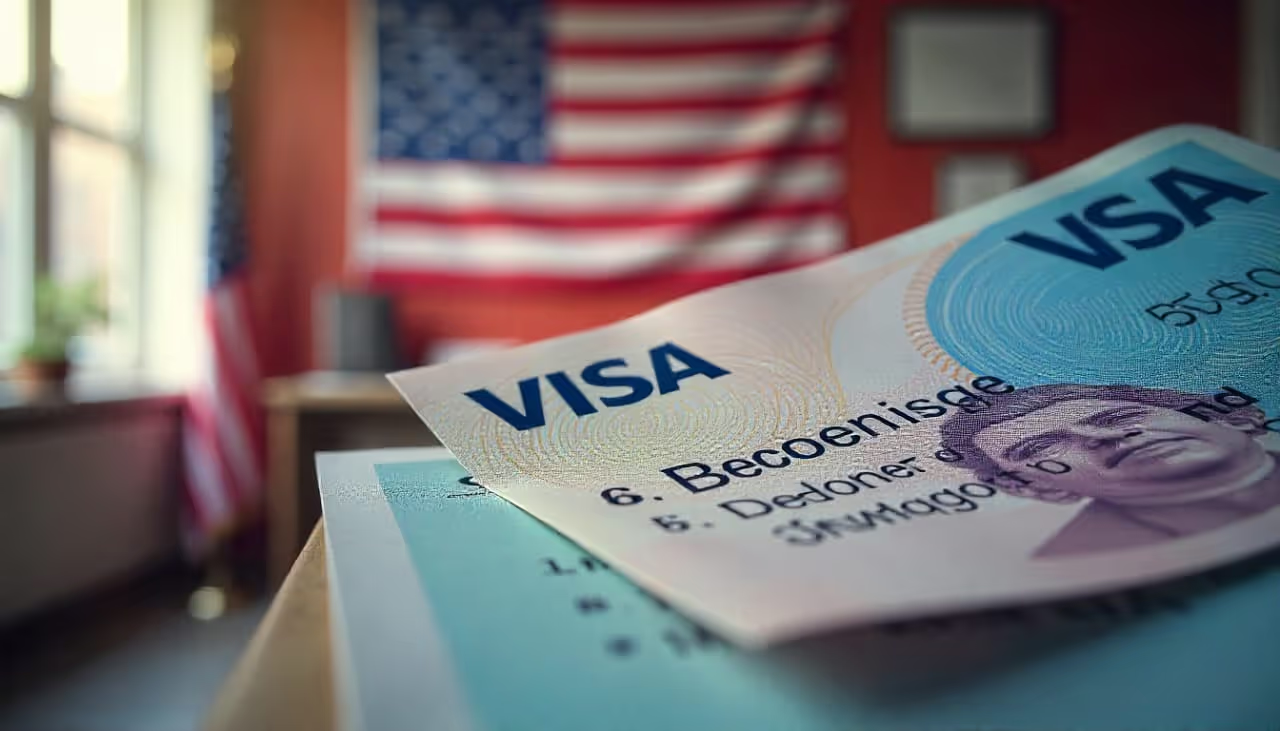.png)
.png)
Curious if you qualify for the EB-1A green card? This comprehensive EB-1A checklist breaks down the USCIS criteria, eligibility strategies, and how Beyond Border can help you build a winning case.

The EB-1A green card—also known as the green card for individuals of extraordinary ability—is one of the most flexible and prestigious U.S. immigration options. It allows high-achieving professionals in fields like science, arts, business, education, and athletics to secure permanent residency without employer sponsorship. But here's the catch: it’s not just about talent—it's about proving it with evidence.
If you're aiming for this path, the first step is understanding exactly how USCIS evaluates your profile—and whether you truly meet the benchmark. EB-1A checklist.
At its core, the EB-1A is designed for individuals who are at the very top of their profession or field. You don’t need a U.S. job offer or an employer sponsor. Instead, you self-petition and demonstrate that your work has received national or international acclaim and that you’ll continue contributing to your field in the U.S.
You either need a major internationally recognized award (like a Nobel Prize) or meet at least 3 out of 10 specific criteria set by USCIS. Let’s walk through those.
Here's a closer look at the ten EB-1A eligibility criteria, explained in everyday terms. Remember—you only need to meet three, but presenting more, with solid evidence, always helps.
This includes nationally or internationally recognized awards. It doesn't have to be a Nobel Prize—but it needs to be prestigious, competitive, and well-documented. Think: major academic or professional awards, industry accolades, or government-recognized honours.
Not all memberships count—USCIS wants to see exclusive associations where you must meet strict qualifications. For instance, being elected to a professional academy or elite scientific society based on merit might qualify.
Articles, interviews, or media profiles that discuss your work (not written by you) in prominent outlets or journals. These must show that others recognize your impact. Being featured in Forbes, Nature, The Hindu, or other respected publications adds credibility.
Have you served as a reviewer, jury member, editorial board member, or selection committee participant? USCIS values this as proof that you’re trusted to assess peers in your field.
This is often a central piece of an EB-1A case. You’ll need to show that your ideas, innovations, or research changed the game. Think patents, highly cited research, new business models, or artistic breakthroughs.
This is common for academics and researchers—peer-reviewed journal articles, book chapters, or papers presented at top conferences. High citation count, impact factor, and prestigious journals are key.
This one’s for visual or performance artists. If your work has been shown at recognized galleries, museums, or major festivals, you may qualify here. Include media coverage and curatorial statements as evidence.
Did you hold a senior leadership position at a notable institution, company, or project? You’ll need to show your title, responsibilities, and the organization’s stature in the field.
If your income is significantly higher than the norm in your industry and geography, it could count as proof of exceptional ability. Contracts, pay slips, and industry benchmarks matter here.
This applies to musicians, actors, directors, or producers with impressive sales, streaming stats, box office numbers, or chart rankings. You must show that your work has achieved real market impact.

Here’s the reality: meeting 3 criteria is the minimum. That doesn’t guarantee approval. USCIS will also conduct a final merits determination, meaning they’ll look at your entire case and ask:
If your documentation is weak, vague, or too generic, they might still deny your petition—even if you meet the basic count.
This is where strategic support from Beyond Border can make all the difference. Our team helps you identify your strongest evidence, fill in gaps, and package your story for maximum impact.
Let’s look at some real-world examples of EB-1A-worthy profiles:
Think of EB-1A like a personal “hall of fame” petition—you need to show that you’re not just good but exceptionally influential in what you do.
Unlike EB-2 (National Interest Waiver) or EB-2/EB-3 categories that need employer sponsorship and labor certification, EB-1A lets you self-petition. You’re in the driver’s seat.
Plus, EB-1A green cards are usually current in the Visa Bulletin—meaning faster processing, especially for applicants from backlogged countries like India and China.
Ready to explore your green card options? Beyond Border can guide you through the best route for your profile.
Want expert eyes on your petition? Beyond Border offers strategic case reviews tailored to your strengths.
Q: What’s the biggest reason EB-1A petitions get denied?
A: Weak evidence and lack of clear impact. USCIS wants to see that you’ve shaped your field—not just done your job well.
Q: Can I apply for EB-1A while outside the U.S.?
A: Yes! You can file from anywhere and go through consular processing after I-140 approval.
Q: Does publishing blog posts count as “scholarly work”?
A: Usually not—USCIS prefers peer-reviewed or formally published academic articles.
Q: How long does the EB-1A process take?
A: With premium processing, the I-140 decision comes in 15 days. But adjustment of status or consular processing takes additional time.
Q: Do I need an immigration lawyer to file EB-1A?
A: It’s not mandatory, but expert guidance—like what Beyond Border provides—can greatly improve your chances.

The EB-1A green card isn’t just about being great—it’s about proving that greatness on paper. If you’re pushing boundaries, shaping your industry, and ready to bring that brilliance to the U.S., you might already be closer than you think.
Not sure where you stand? Let’s figure it out—together.
Reach out to Beyond Border to schedule your EB-1A evaluation.